The current ‘full lockdown’ imposed by the stricter Movement Control Order is expected to affect the retail operations of many businesses. In the auto sector, showrooms must remain closed although aftersales services at service centres are allowed to operate. This will certainly have an effect on the Total Industry Volume (TIV) again, as it did a year ago when sales plummeted to nearly zero.
Best export performance since 2013
Proton cannot escape such effects but it is counting on export sales to help offset the downturn. Its International Sales Division has been recording increased numbers, with May 2021 being the best export sales month since March 2013. A total of 669 vehicles was sent overseas and up to the end of May, the export volume is 174% of the target set and only 6% behind what was achieved for the whole of 2020.
Proton’s growth in export sales is due to growing demand in several key markets, some new and some having sold Protons for decades. For example, Pakistan is a new market for the company and in the first 5 months of 2021, it was by far the best performer.
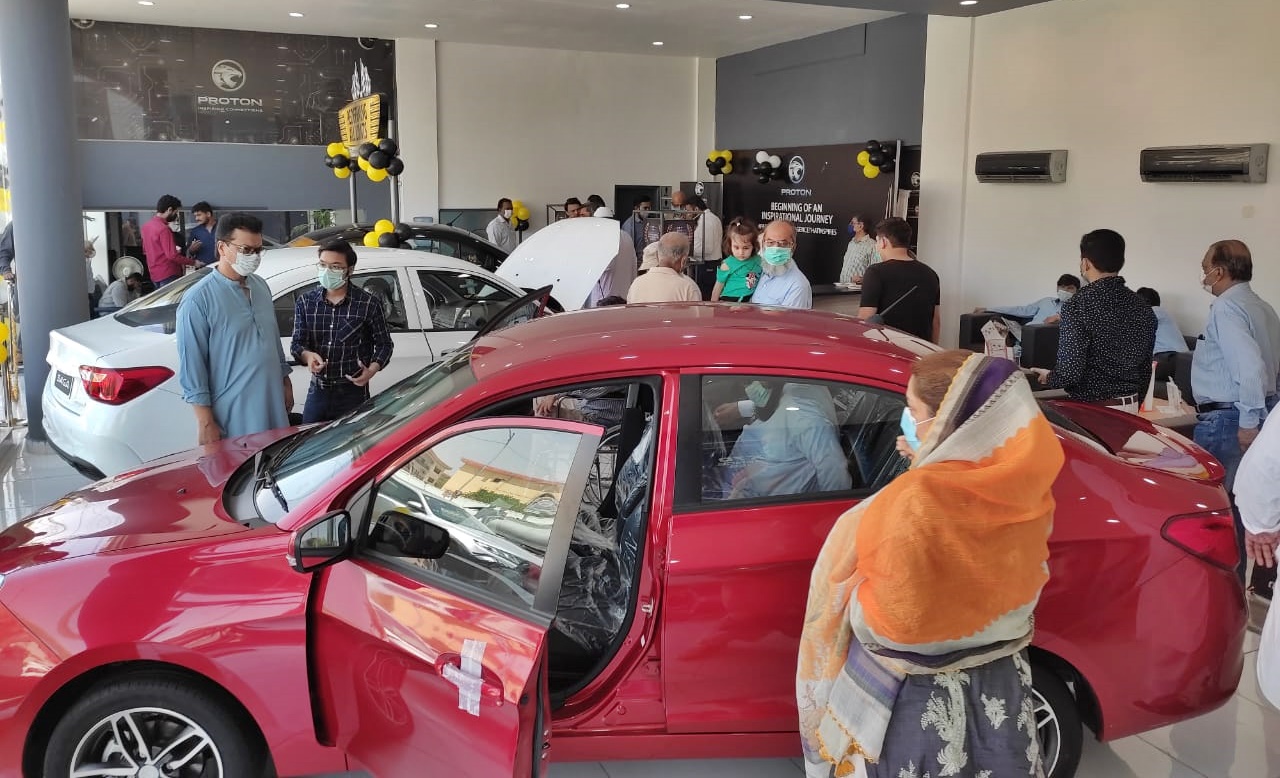
Brunei, which started selling Proton vehicles as far back as 1987, was the third biggest export market by volume this year and in May, importers PAD Motors had the best sales month in the company’s history. In Egypt too, Alpha Ezz El-Arab, the importer and distributor for Proton cars, ordered and received 350 units this year, making it Proton’s second largest export market.
More exports in 2021
“At the beginning of the year, our plan for 2021 was to aggressively grow Proton’s export sales volume. Despite international restrictions and the rising cost of shipping caused by the coronavirus pandemic, we were confident of being able to meet our goals due to the sales plans of our importers and the appeal of our products. After 5 months, however, we are close to doubling the volume target set, which hopefully is a sign for more success in 2021,” said Steven Xu, Director of International Sales.
Although the present situation has slowed down new orders in the domestic market, demand has been high, and Proton’s factory is ready to meet this demand. For export markets, its longer term goals will be met by having some models assembled in certain countries. It has begun local assembly for the Saga in Kenya, and the next market to assemble cars locally will be Pakistan.

“If everything goes to plan our partner in Pakistan, Al-Haj Automotive will begin assembly operations with the Proton Saga by the end of July or early August at its new plant in Karachi. The Proton X70 will be added to their production line later, and we have high hopes this development will spur sales growth in the South Asian region,” said Mr. Xu.
ASEAN sales vital for future growth
While growing sales in export markets is a reassuring sign of wider acceptance of the Proton brand and its products, the key to achieving the company’s long-term goals remains sales growth in ASEAN. The region is hotly contested with many global brands having invested in production facilities that supply local and export markets as well as competition from local manufacturers.
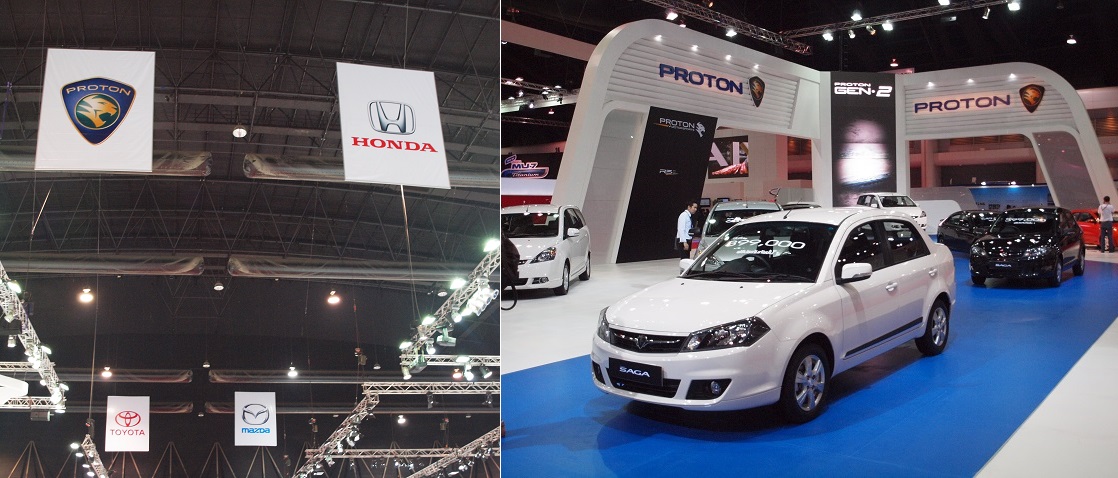
Currently, Proton’s presence in ASEAN is limited to Brunei but the company has plans to return to the two biggest markets in the region – Thailand and Indonesia, in the very near future. “For Proton to be the third best-selling brand in ASEAN, we need to have a major presence in Thailand and Indonesia. As the biggest automotive markets in the region, they offer enormous volume potential, but the level of competition is also very high. For both countries, we have been busy recruiting partners to build a network that ensures a viable business model and in the short term, our target is to return to Thailand in 2022,” Mr. Xu added.
With greater attention to overseas business, Proton aims to double export volumes in 2021
Electrically-powered cars are not new to Volvo but the new C40 Recharge will be the first such vehicle that the public can buy. It’s the first Volvo model in history designed as pure electric only, spearheading the future of the Swedish brand. Its SUV elements and benefits combined with a lower profile means that Volvo Cars also enters a new segment – and it does so with cutting-edge design and features not previously seen on Volvo cars.
“The C40 is a car that symbolises electrification and delivers on it,” said Robin Page, head of design at Volvo Cars. “It has the personality of the XC40, which proved to be attractive to many, but it’s dialled up even more through its dynamic expression and sleek profile. It’s a really attractive product for people who are looking for the easy-to-live-with aspects of an SUV with more of a modern statement.”
Though it seems like a variation of the XC40, it is actually much more that than (apart from the fact that it has an electric powertrain), adopting only the fundamental building blocks of the XC40. Similar to the birth of the XC40, the C40 started as a spontaneous sketch by one of the designers in the team. It was Yury Zamkavenka’s sketch which ‘hit the ground running from the initial idea’, according to T. Jon Mayer, Head of Exterior Design.
“That doesn’t happen very frequently. When it does, it’s always some of the more characterful ideas that flourish, because it’s such a pure statement from that first sketch,” Mayer explained, adding that the uniqueness of the car – its commanding seating position combined with a streamlined form – becomes very clear when it’s on the road next to other cars.
“One of my favourite views of the car is the rear seven-eighths, which gives you a view of the side and the coupé line profile,” he said. “You see the SUV elements as it sits on these really big wheels, and it’s this tough little character but with a very sleek approach to the roof. It’s built upon the solidity of the XC40, but in a more dynamic way. These combinations give it a totally different expression, while still carrying on our DNA.”
Breaking new ground
The idea of breaking new ground with something familiar is mirrored in individual details. For example, the signature Thor’s Hammer headlights are augmented with new pixel LEDs, which automatically adjust to light conditions and switch on and off independently to optimise the light pattern. The equally emblematic vertical rear lights are segmented, providing a testament to the engineering challenge of extending one big lamp along the roofline, while also creating a modern take on a classic design.
The DNA is distinguished by a Scandinavian approach in the form language: sections are shaved and carved out of the solid form, creating a sense of purity and refinement; an understated confidence. “It communicates a solidity, which can also link to a feeling of safety,” Mayer said. “Subconsciously, this is a powerful beast that’s protective, yet we sculpt it in a way to make it as lightweight and efficient as possible.”
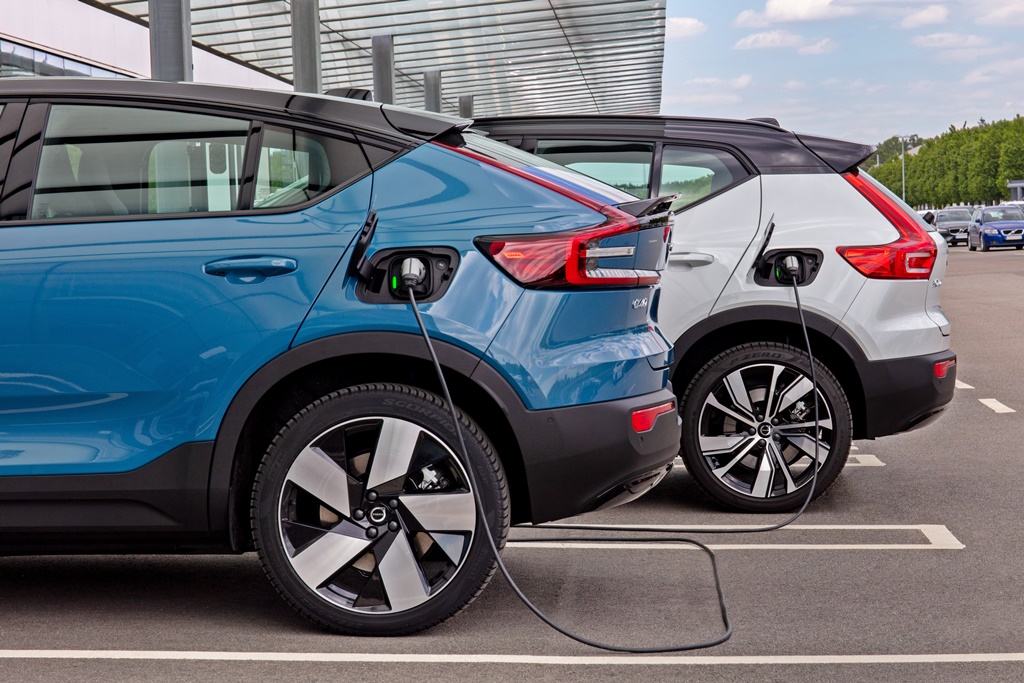
Nature and light
Using these design principles – as well as inspiration from the Scandinavian landscapes with their quiet atmospheres, light and freedom of space – the confidence of the exterior design is tied together with an interior design characterised by the calming effects of nature. There’s the large, panoramic glass roof that enhances the airiness of the cabin, making the most out of short winter days, while blurring the line between outside and inside during bright summer nights.
“In Sweden, it’s dark and grey most of the year – but when the sun shines, the colours come to life much more vibrantly than anywhere else,” said Lisa Reeves, Head of Interior Design. “The grass looks greener, the sea looks bluer. You see this reflected in the architecture here: houses have a lot of glass, designed to really let in the light and the open floor plans spread the light within the house. Light and nature are strong parts of the culture and are important themes for the C40 interior.”
The Fjord Blue colour, inspired by the deep inlets on the Scandinavian west coast, flows from the exterior and creates a continuation inside by colouring the large swathes of carpet that extends up from the floor to the sides of the tunnel console and the front doors. This provides a foundation for the backlit translucent graphics on the dashboard and front door panels, which are a nod to the dramatic, yet serene mountain sceneries in Sweden’s Abisko national park.
“We traced the topography of the park and used the contours to create an abstract digitalised design with a layered pattern,” explained Rekha Meena, Senior Design Manager, colour and material. “When the light from LED lamps comes through across the surface, it creates this really nice, atmospheric three-dimensional effect.”
Sustainable materials
Hand-in-hand with nature as a source of inspiration is the high amount of sustainable materials used for the interior. The topography trim panels are partly made of recycled plastic, while the carpet is made of 100 per cent recycled PET plastic bottles. The C40 offers Volvo Cars’ first leather-free interior, with one upholstery option containing naturally renewable wool fibres, and a second option using a combination of suede textile (also made of recycled plastic) and micro-tech material.
The layout of the interior gives a sense of organisation and thoughtfulness, where functionality is key. The C40 repeats the XC40’s ‘uncluttering’ approach, providing smart and thoughtful ways to store all important belongings within arm’s length. Minimalism is an overarching theme, which becomes even more evident when looking at the instrument panel.
Symbolism and function
Using renewable and recycled material is one part of the sustainability equation, and the car being fully electric is another. But to really get the message of electrification across, the C40 needs to look the part as well, and it does so with features that blend symbolism and function together.
The new wheel design, influenced by the Volvo 360c concept car from 2018, helps with aerodynamics while creating a dynamic look fitting the driveline; the rear spoiler both characterises and supports downforce on the car; and the roofline boosts aerodynamic efficiency, giving it a functional as well as a visual relationship to range. And then there are the elements where messaging slightly takes the upper hand, like the closed grill and the contrast roof.
“To symbolise the electric car, the face is really important,” said Page. “Part of our design language is about honesty, and the reality is that we don’t need a large air intake for an electric car. This car originates from the XC40 – which does have a grill – so it’s not a case where we can just ignore that and do a super low, fully moulded front. And we wouldn’t want to do that on this car anyway, because the C40 has a characterful face. We achieved a good solution, with strong, pure graphical lines. Together with the contrast roof, which we’ll use to distinguish our 40 cluster electric cars, it’s one of the ingredients that communicates our journey towards full electrification.”
The War on COVID-19 involves everyone – in fact, it is a global fight – and many companies are helping in various ways. Those with resources like factories have used their manufacturing facilities to produce Personal Protective Equipment (PPE) instead of their usual products. Carmakers, with lots of cars available, have also provided vehicles for use by healthcare personnel to get around and do their important work.
Recently, Perodua provided an Aruz and a Bezza to the Pusat Kuarantin dan Rawatan COVID-19 Berisiko Rendah 2.0 (PKRC) at MAEPS, Serdang in Selangor. The facility is presently used as a quarantine centre for those infected with COVID-19. The cars were provided through Agensi Pengurusan Bencana Malaysia (NADMA) which is responsible for emergency management. They will be used to transport essential items sent by families or friends of those who are in quarantine.
Together with the cars, RM300 per month of petrol vouchers have been provided and the Malaysian carmaker also contributed 5 laptops for NADMA’s use.
Various other forms of support
This support follows many other contributions made to key public institutions nationwide, especially the frontliners. The contributions have been in cash and supplies to help in fighting the pandemic. For example, last month, Perodua contributed an additional RM80,000 worth of medical supplies to Hospital Sungai Buloh, a key medical facility that handles a large number of COVID-19 cases.
Perodua has also supplied face shields, manufactured by an associate company, to various organisations in Malaysia over the past year. The recipients have been schools, clinics, local government offices and councils, and even hawkers at markets in Perodua’s surrounding community.

East Malaysia not forgotten
While a large proportion of Perodua’s sales are in Peninsular Malaysia, the carmaker does not also forget that the East Malaysian markets have also contribute to its ascent to being the No. 1 brand in the country. And like a good corporate citizen, the company has been giving back to the local community there.
As part of its Corporate Social Responsibility (CSR) activities last year, it provided the Sabah Women and Children’s Hospital with a portable flexible videoscope set, while 250 underprivileged paediatric patients received contributions ranging from school supplies to prescription glasses. These contributions were a follow-up from an earlier initiative in 2018 which saw the contribution of two laryngoscope blade sets and 40 bed pillows, and toys for some 250 child patients.
Aiming for net zero carbon emissions by 2039, in line with the Reimagine strategy announced last month, Jaguar Land Rover’s (JLR) aim includes zero tailpipe emissions from its vehicles by 2036. This means that internal combustion engines will no longer be used. Electrical power is the most viable solution for future powertrains as they will have zero emissions, and JLR is developing various prototypes.
Fuel cells, spin-offs from the space program, are being considered by a number of manufacturers, some of whom already have commercialised fuel cell electric vehicles (FCEVs). JLR is also looking to use a hydrogen fuel cell and is developing a prototype FCEV based on the latest Land Rover Defender.
Advantages of hydrogen FCEV
FCEVs, which generate electricity from hydrogen to power an electric motor, are complimentary to battery electric vehicles (BEVs) on the journey to net zero vehicle emissions. Hydrogen-powered FCEVs provide high energy density and rapid refuelling, and minimal loss of range in low temperatures, making the technology ideal for larger, longer-range vehicles, or those operated in hot or cold environments.
Since 2018, the global number of FCEVs on the road has nearly doubled while hydrogen refuelling stations have increased by more than 20%. By 2030, forecasts predict hydrogen-powered FCEV deployment could top 10 million with 10,000 refuelling stations worldwide.
JLR’s advanced engineering project, known as Project Zeus, is partly funded by the government-backed Advanced Propulsion Centre, and will allow engineers to understand how a hydrogen powertrain can be optimised to deliver the performance and capability expected by its customers: from range to refuelling, and towing to off-road ability.
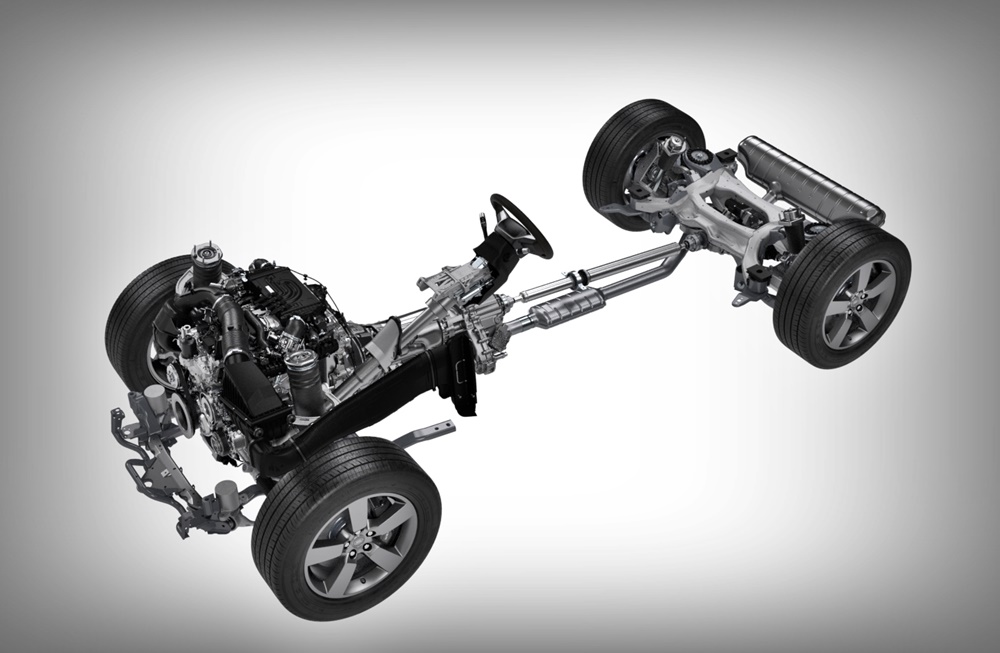
The project also has other partners involved such as Delta Motorsport, AVL, Marelli Automotive Systems and the UK Battery Industrialisation Centre (UKBIC) to research, develop and create the prototype FCEV with testing scheduled to begin this year. The testing, in the UK, will verify key attributes such as off-road capability and fuel consumption.
“We know hydrogen has a role to play in the future powertrain mix across the whole transport industry, and alongside battery electric vehicles, it offers another zero tailpipe emission solution for the specific capabilities and requirements of Jaguar Land Rover’s world class line-up of vehicles. The work done alongside our partners in Project Zeus will help us on our journey to become a net zero carbon business by 2039, as we prepare for the next generation of zero tailpipe emissions vehicles,” said Ralph Clague, Head of Hydrogen and Fuel Cells for Jaguar Land Rover.

Producton facilities are carbon neutral
JLR was the first UK automotive manufacturer to have met the internationally recognised PAS 2060 standard for carbon neutrality across its vehicle manufacturing assembly operations and product development sites. In January last year, its facilities completed a second consecutive year being certified as carbon-neutral by the Carbon Trust. Together, these sites represent 77% of JLR’S global vehicle production.
The Carbon Trust re-certification is part of the carmaker’s journey to ‘Destination Zero’, after it was originally achieved two years ahead of a commitment to operate carbon-neutral UK manufacturing by 2020.
New Land Rover Defender’s Mild Hybrid Electric Vehicle system provides ‘future-proofing’
With its digital unveiling of the Chiron Super Sport recently, Bugatti continues its development of elegant, comfortable, and ultra high-performance hyper sportscars. The new member of the Chiron family is the essence of what the engineers have learned and developed in recent years to create the ultimate Grand Tourer.
The Chiron Super Sport embodies a part of Bugatti’s broad spectrum of performance – a counterpart to the Chiron Pur Sport, which was made for cornering and lateral agility. It has been designed for speed, adopting a new vehicle design with optimized aerodynamics for the streamlined bodywork. From the front splitter to the rear diffuser, every centimetre of its skin is designed for top speed.
Superlative aerodynamic performance
At speeds over 420 km/h, a vehicle must offer sufficient downforce alongside minimal drag. “Our aim was to give the vehicle a neutral set-up at its top speed while also giving it as streamlined a shape as possible.” explained Frank Heyl, Deputy Design Director at Bugatti. “The uplift forces exerted on the bodywork at 440 km/h are immense. The body of the Chiron Super Sport generates massive downforce to counter this uplift and perfectly balance the forces.”
“The design process was therefore in particular about achieving aerodynamic efficiency,” Heyl continued. “The Chiron Super Sport’s extended rear, which is known as a long tail, gives it new proportions and very distinctive aesthetics.”
For aerodynamic performance, the rear has grown by approximately 25 cm to hold the laminar flow to the bodywork for as long as possible. Bugatti designers also enlarged the diffuser cross-section, pushing the diffuser’s trailing edge higher and thereby reducing the rear’s trailing surface by 44%. As a result, the slipstream and wind resistance generated are significantly reduced – factors which otherwise decelerate the vehicle.
Even from afar, the Chiron Super Sport is unmistakable due to its repositioned tailpipe configuration. To boost the effect of the diffuser and give it more space, Bugatti has shifted the otherwise central exhaust system to the side, with the pipes aligned vertically.
The 9 exhaust air holes on each fender are more than just a nod to the EB 110 Super Sport – they also serve to release the air pressure from the front wheel wells, thereby generating streamlined downforce at the front axle. Additional outlets behind the front wheel arches likewise help to balance out the aerodynamic loads.
For even greater exclusivity, new aluminium wheels in a 5Y-spoke design are available only for the Chiron Super Sport. These new Super Sport wheels are also available in a diamond-cut option. The Chiron Pur Sport’s iconic magnesium wheels, which further reduce the weight of the unsprung mass, are also available as an option.
Greater performance, higher revs
Bugatti thoroughly overhauled the 8.0-litre W16 engine for the Chiron Super Sport, boosting its performance by 100 ps to 1,600 ps. Maximum torque of 1,500 Nm is accessible from between 2,000 and 7,000 rpm, rather than up to 6,000 rpm. The extra engine speed (300 rpm) allows for even greater longitudinal acceleration and an even more emotive driving experience. The overall weight is also lowered by 23 kgs.
With the improved performance created by larger turbochargers with more efficient compressor wheels, the 7-gear dual-clutch transmission at full load and full speed transitions from sixth to seventh gear at 403 km/h. The claimed 0 to 200 km/h is 5.8 seconds and to 300 km/h is 12.1 seconds.
Chassis set-up for top speed
The new chassis has been developed specifically for the Chiron Super Sport’s high speeds and new aerodynamics. The steering systems and dampers create a firmer and more rigid connection to the vehicle from the driving feel, resulting in tighter steering for smoother steering movements. Harder springs stabilize the entire vehicle at top speed, and the engineers additionally also retuned the electronically controlled chassis.
Tyres with 500 km/h speed capability
Newly developed Michelin Pilot Sport Cup 2 tyres which have been optimized for top speed offer greater rigidity and smoothness than grip-optimized tyres fitted to the Chiron Pur Sport. What’s more, it is said that these are the only tyres that can consistently be used at up to 500 km/h. This is made possible by reinforced belts that can cope with immense forces – verified on the test bench originally built for the Space Shuttle.
Bugatti will soon begin with the manufacture of the Chiron Super Sport, with only 9 units planned for sale. Delivery of the hyper sportscars, each priced from 3.2 million euros (almost RM16 million) will start in early 2022.
Bugatti Chiron Sport versus Dassault Rafale Marine (w/VIDEO)

While systems like Proton’s GKUI, Ford’s SYNC and the Mercedes-Benz MBUX can intelligently communicate with you and help you with your motoring nowadays, cars have been ‘speaking’ to drivers for a long time. This has been in the form of clicks, beeps, bells or buzzers, with the earliest sound was probably the clicking of the signal lights.
As time went on, other warning sounds were added. For example, if a passenger does not put the seatbelt on, a sound of some sort will provide a reminder. Or when the fuel level gets too low, there will be a warning so the driver will start looking for a petrol station. Japanese cars, from the 1970s, even had a chime that would sound when the speed passed 100 km/h.

Higher quality warning and reminder sounds
The familiarity of the sounds can be important so that virtually any driver will recognise their meaning. At the same time, they need to be ‘right’ so that the driver will respond in the correct way. While most companies use generic sounds, Nissan has teamed up with experts at the Bandai Namco Group to develop in-car sounds for the latest and future Nissan models such as the Rogue, Pathfinder, Note and Qashqai.
The Bandai Namco Group is the entertainment company that developed videogame classics like Pac-Man and Tekken, and also the Gundam sci-fi military hobby items. Their expertise was called upon to help create a higher quality sound that uses pitch, tempo and tone to get information across. Ultimately, Nissan wants the ‘voice’ of its vehicles to have more personality and character.
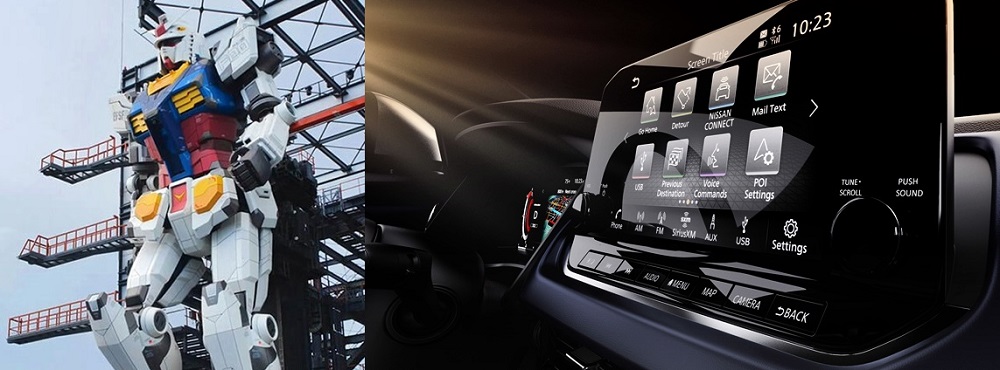
“We wanted to make it easier to understand the information in the car and provide an emotional tone so that people feel the Nissan brand,” said Hiroyuki Suzuki, Nissan’s lead engineer for in-car information sound design. “In game development, Bandai Namco’s sound creators develop sounds that simulate players’ intuitive understanding. We collaborated to create sounds that can help drivers have a similar intuitive understanding, in addition to creating sounds that will become synonymous with Nissan’s global models.”
Developing informational sounds
There is psychology involved in the design of informational sounds. And who knows better than the sound designers of videogames? “There are two types of sound in a game: one creates the world view of the story and express how it develops; the other is functional and absolutely vital for playing the game because they give you feedback or warn you of danger,” said Minamo Takahashi, the sound director at Bandai Namco Research Inc.
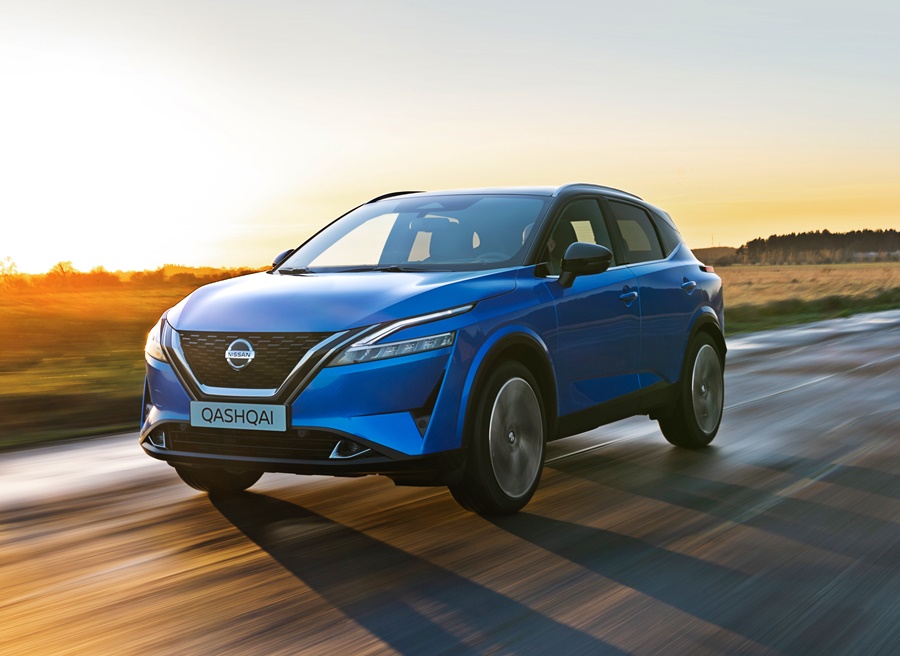
Distinctly Nissan and functional
He notes that similar to gaming sounds, vehicle cabin alerts must convey important information without distracting the driver. But despite how realistic videogames have become, Takahashi said there is still a big difference to making sounds that work in the real world. Working with the Nissan team, he developed sounds that are both distinctly Nissan and functional.
“It was a very intense process,” he revealed. “We stayed for days in the studio, had various discussions and went through trial-and-error with Nissan people from the sound engineering, product planning, design, and testing divisions to find out what kind of sound is suitable for the Nissan brand.”
Once the tones were created in line with the brand’s image, the next step was to create variations of the tones according to the urgency and seriousness of the information being conveyed to the driver. As Nissan’s ergonomics test engineer Miwa Nakamura explains: “Research has shown that urgency depends on the frequency of the sound, and that severity depends on the frequency itself. In order to intuitively understand what types of sounds are used, each sound is divided into functional groups and differentiated by tone.”
Besides creating a new signature sound, Nissan engineers also had to consider the devices being used to emit cabin alerts. When they realized that the monotone devices commonly used would not emit the more layered tones that Bandai helped produce, they had to find a solution.
“There is a limit to the expressiveness of those devices, so we developed a new speaker,” said Hato Hiroshi, a Nissan expert of vehicle system design. A new high-quality speaker fits under the dashboard close to the driver and is optimized for the new information soundscape in Nissan cars, making the important warning sounds distinctive from the sound from the audio speakers.
Through the partnership, Nissan engineers were able to get a new perspective from sound creators who make videogames. Meanwhile, the gaming experts enjoyed a new application of sound design.
“When I got in a car and listened to the sound coming out, I felt the same way I felt when first playing a game I worked on,” said Bandai Namco’s Takahashi. “Even if the industry is different, that sense of accomplishment when you reach your goal is the same.”
Click here for other news and articles about Nissan.
Throughout the history of the automobile, there have been many iconic models with designs that even today remain special. The Jaguar E-Type is one of them and various companies have restored original units for collectors, if not themselves. There are also companies which build reinterpretations of the famous Jaguar sportscar.
Limited production of a legend
Building the Legend Limited in England is one of them and engineer Neville Swales, its owner, has completed the very first example of the V12-powered Jaguar E-type homage. Beginning in the E-type’s 60th anniversary year – and 50 years since the V12 Series III E-type was introduced – only 24 of these cars will be built. Working with one of the UK’s foremost coachbuilders, each one will be a unique rebody and reinterpretation of Jaguar’s Series III V12 E-type in coupe, roadster or ‘low drag’ racing car form.
Although the first 4 cars in the series are already booked, a total of 6 cars will be delivered each year over the next 4 years. Each one will be hand-crafted to high production standards with advanced modern technology and bespoke interiors, replicating the purity and elegance of the early E-types which enthusiasts feel was lost as the series evolved over the years.
The Jaguar built for Le Mans but never raced
From small beginnings in his workshops in Coventry, Swales creates meticulously engineered and beautiful sports cars. His first were inspired by Jaguar’s 1966 XJ13 prototype – a car originally designed to take on the might of Ford and Ferrari at Le Mans, although the single original example built by Jaguar never got to do that.
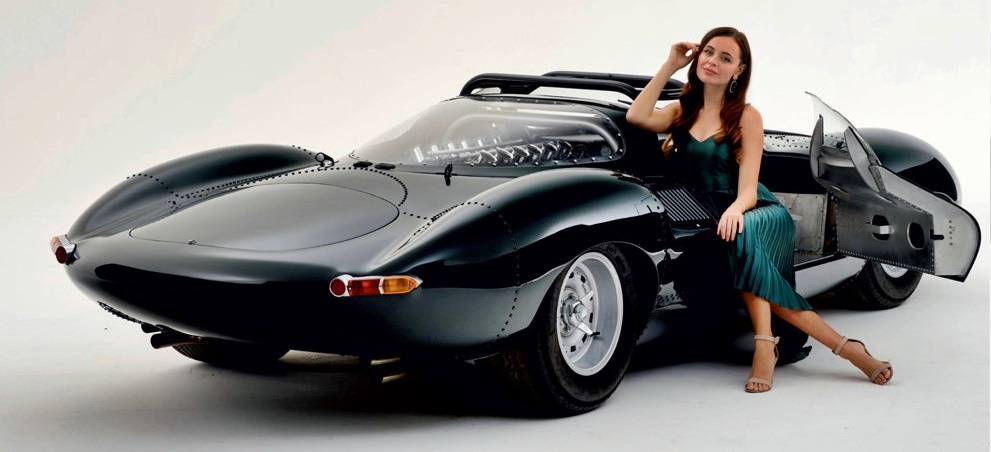
Assisted by surviving members of the original team who created this masterpiece in 1966, Swales’ first recreation of the XJ13 was a finalist in the 2016 International Historic Motoring Awards, where it stood fender to fender against icons such as the 1966 Le Mans-winning Ford GT40 and the 1956 Le Mans-winning Jaguar D-type.
It has since been joined by a very limited number of cars for customers built to the same exacting standard and, aiming to push the boundaries of automotive restoration even further, his journey continues with cars powered by his own unique interpretation of Jaguar’s legendary quad-cam V12 ‘XJ13’ engine – the tera V12.
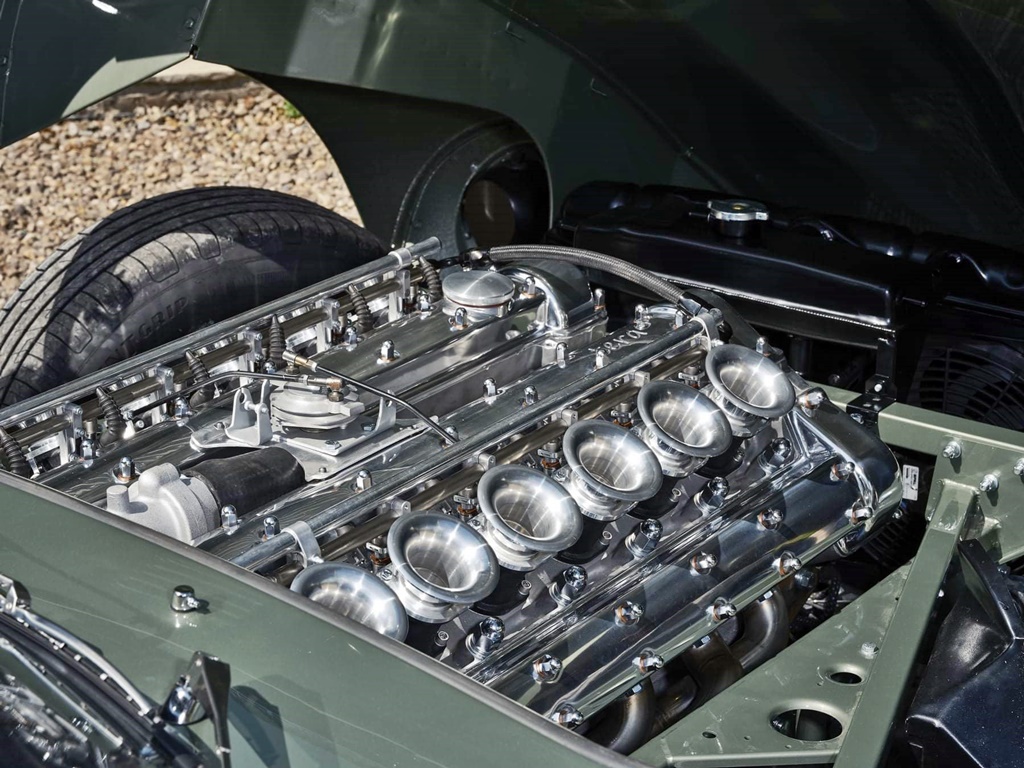
Also taking inspiration from period offerings from Ferrari, Matra and Lamborghini, the tera V12 is the type of power unit that could have been heard howling down the Mulsanne Straight at Le Mans in 1966 and beyond. It was an engine that should have powered Jaguar’s range of sportscars and saloons – if circumstances had allowed.
‘Future-proofed’ V12 engine
Capable of running on the new generation of carbon-neutral ‘green’ fuels, the tera V12 is a beautifully sculptural engine that will be heard for many years into the future, as the world responds to its environmental challenges. Swales’ mission with his latest car is to celebrate the purity of the iconic Series 1 E-type design, combined with the tera V12 engine which is available in 6.1-litre or 6.8-litre form.
All cars are built to the exact specification requested by the owner. Personalisation of a very high degree is possible with a vast range of options, plus bodystyles and detailed finish limited only by their imagination.
Original Jaguar E-Type toolkit now available from Jaguar Classic
The bestselling van in history, with over 12 million units sold worldwide, is the Volkswagen Transporter. While the earliest version which began in 1950 was on a Beetle platform, the model later gained its own ‘T platform’ from the 1990s for a variety of versions including minibuses, pick-ups and campervans.
From T platform to MQB platform
The current generation is the T6 Transporter with its people-mover variant known as the Caravelle. With the new T7 generation, the Transporter will leave the T platform behind in what will be the creation of a new model line named Multivan, while the current T6 is likely to continue as a commercial van for some time.
A trio of vans
The new Multivan (1941 mm wide, 4973 mm long) will ride on the Volkswagen Group’s MQB platform which should give it more versatility. It will be a less commercially-oriented product and is likely to become a significant MPV model range as well. In fact, Volkswagen has already indicated that the Multivan will be one of three members of a multi-purpose vehicle line-up that will include the T6 Transporter and all-electric ID. Buzz.
The exterior looks of the Multivan adopt the latest design language seen on the new Golf and Polo, and also pays homage to its predecessors, dating back to the 1985 Transporter T3. The front air intakes, painted in the same colour as the vehicle, have been reduced, paying tribute to the heritage of the rear air-cooled engines of the first three generations.
The colour scheme in the press photos goes with the cubic theme of the design which has clean surfaces and large glass panels all round. Also available is a panoramic glass roof with LowE laminated safety glass to reduce incoming thermal radiation by 44%.
PHEV for the first time
Volkswagen has a large number of markets and so its powertrain choices for the Multivan will need to take into consideration the less developed countries which will still want combustion engines. At the same time, for the markets where electrification is moving forward, there is a plug-in hybrid (PHEV)variant – the first time in this Volkswagen segment.
The Multivan PHEV will have a 1.4-litre TSI 150 ps petrol engine and an electric motor powered by a 13 kWh lithium-ion battery pack. The total system output is 218 ps with instantaneous torque which will provide brisk performance. Volkswagen does not give any numbers yet other that that, with a 6-speed DSG transmission, ‘short, urban trips’ are possible on pure electric power.
The combustion engine powertrains that will be available will be two 4-cylinder turbocharged petrol engines – 136 ps 1.5 TSI and 204 ps 2.0 TSI – and a 150 ps 4-cylinder turbodiesel. All the engines will deliver their power through a 7-speed DSG to the front wheels.
Semi-autonomous capability
The Multivan will have a lot of new and advanced tech, with more than 34 driver assist systems. Besides the ones that provide autonomous braking, lane-keeping and adaptive cruise control, there is also IQ.DRIVE Travel Assist which allows semi-autonomous driving by combining the predictive Adaptive Cruise Control and Lane Assist to make long-distance journeys safer and easier. It can be used up to 210 km/h.
Other new systems include Car2X – allowing local communication with other vehicles and the highways infrastructure in order to provide warnings of any danger ahead.
More flexible and spacious within
Inside, the new Volkswagen Multivan is more flexible and spacious than ever, with a new modular, lightweight seating system and innovative table. Seating layouts can be for 2 to 7 persons with removable seats and swivelling features.
The innovative multi-function table has been designed specially for the Multivan. Using the central track, it can be moved between any of the seating rows and also used as a centre console between the front seats. The table, which is completely removable, has adjustable height, three cupholders, and a storage bin.
The maximum cargo capacity with all rear seats removed is up to 4053 litres (depending on variant) with the longer 5173 mm version.
The new Multivan will go on sale later this year and while there will be a righthand drive version, it is hard to say whether it will be imported to Malaysia. The last time the model was sold (as the Caravelle) was in the 1990s when a small volume was assembled locally by Auto Dunia, which was then handling the Volkswagen brand.
Fuel cell technology for use in cars is still something in its infancy and only a few manufacturers have started to offer them commercially and even then, in limited numbers and markets. The Toyota Mirai is one of the fuel cell electric vehicles (FCEV) already in production, its first generation having been launched in 2014.
The second generation of the Mirai went on sale late last year and is currently available in Japan, North America and some European markets. As would be expected, has more advanced fuel cell technology that improves performance in many areas.
The compact, high-output Fuel Cell stack has smaller and lighter parts, and it has been specially designed for use with the TNGA GA-L platform. The FC stack sets a new record for specific power density at 5.4 kW/litre as maximum power has risen from 114 kW to 128 kW.
Click here to read more about the 2nd generation Toyota Mirai
More fuel capacity
The new Mirai also has increased fuel capacity (approximately 20%) which extends range. Hydrogen can be pumped in much faster than the fastest recharging time for an electric vehicle which can be up to 25 minutes. Its refuelling time is less than 5 minutes at a 700-bar refuelling station.
Over 1,000 kms travelled
This increased range has enabled the Mirai to break the world record for the distance driven with one fill of hydrogen – over 1,000 kms. The record-breaking run was done in France last month and the car was driven on public roads.
The Mirai can store a total volume of 5.6 kgs of green hydrogen. During the run, the average fuel consumption was 0.55 kg/100 kms, the distance and consumption being certified by an independent authority.
‘Eco-driving’ style used
Toyota does mention that, to achieve the 1,003-km driving distance record, the 4 drivers adopted an ‘eco-driving’ style. However, they did not use any special techniques and everyday drivers can also apply a similar driving style if they want to achieve good fuel economy. Under normal driving conditions, the Mirai has a claimed range of 650 kms with all tanks full.
“It’s an amazing challenge that we achieved with the new Mirai. Internally, it is the mindset of ‘Start your Impossible’, going beyond our own limits, that drives us, and we proved it again,” said Frank Marotte, CEO of Toyota France.
Second generation of Toyota’s Mirai hydrogen fuel-cell car goes on sale today

© Copyright – Piston.my 2024 Trademarks belong to their respective owners. All rights reserved